Nature Total Magnitude 1.0286 Max. width of band 112 km (70 mi) Start date August 11, 1999 | Gamma 0.5062 Duration 143 sec (2 m 23 s) Greatest eclipse 11:04:09 | |
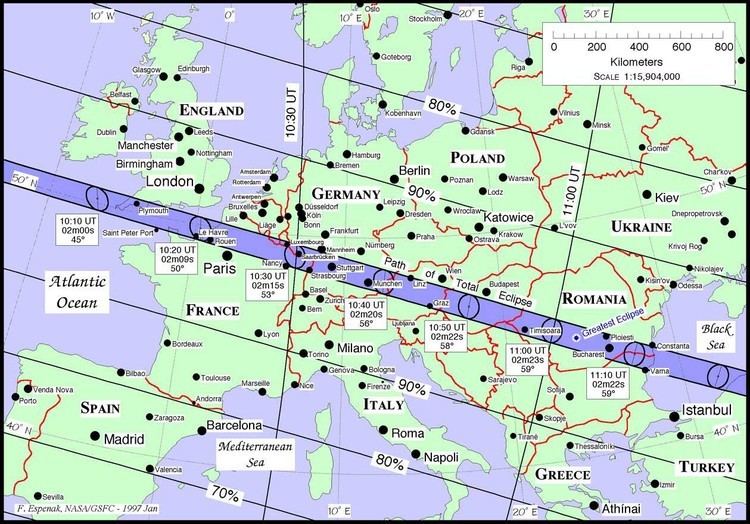 | ||
Other Instances Solar eclipse of April 8 - 2, Solar eclipse of July 2 - 20, Solar eclipse of August 2, Solar eclipse of March 9, Solar eclipse of March 20 | ||
A total solar eclipse occurred on 11 August 1999 with an eclipse magnitude of 1.029. A solar eclipse occurs when the Moon passes between Earth and the Sun, thereby totally or partly obscuring the image of the Sun for a viewer on Earth. A total solar eclipse occurs when the Moon's apparent diameter is larger than the Sun's, blocking all direct sunlight, turning day into darkness. Totality occurs in a narrow path across Earth's surface, with the partial solar eclipse visible over a surrounding region thousands of kilometres wide. The path of the Moon's shadow began in the Atlantic Ocean and, before noon, was traversing the southern United Kingdom, northern France, Belgium, Luxembourg, southern Germany, Austria, Slovenia, Croatia, Hungary, and northern FR Yugoslavia (Vojvodina). Its maximum was at 11:03 UTC at 45.1°N 24.3°E / 45.1; 24.3 in Romania (next to a town called Ocnele Mari near Râmnicu Vâlcea); and it continued across Bulgaria, the Black Sea, Turkey, Iran, southern Pakistan and Srikakulam in India and ended in the Bay of Bengal.
Contents
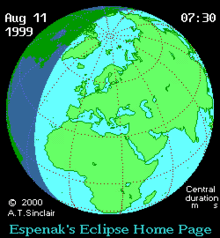
It was the first total eclipse visible from Europe since 22 July 1990, and the first visible in the United Kingdom since 29 June 1927.
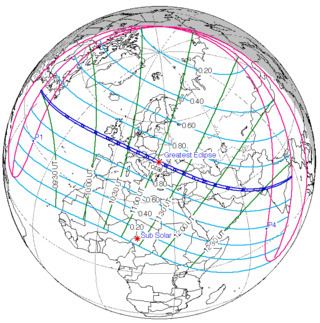
Observations
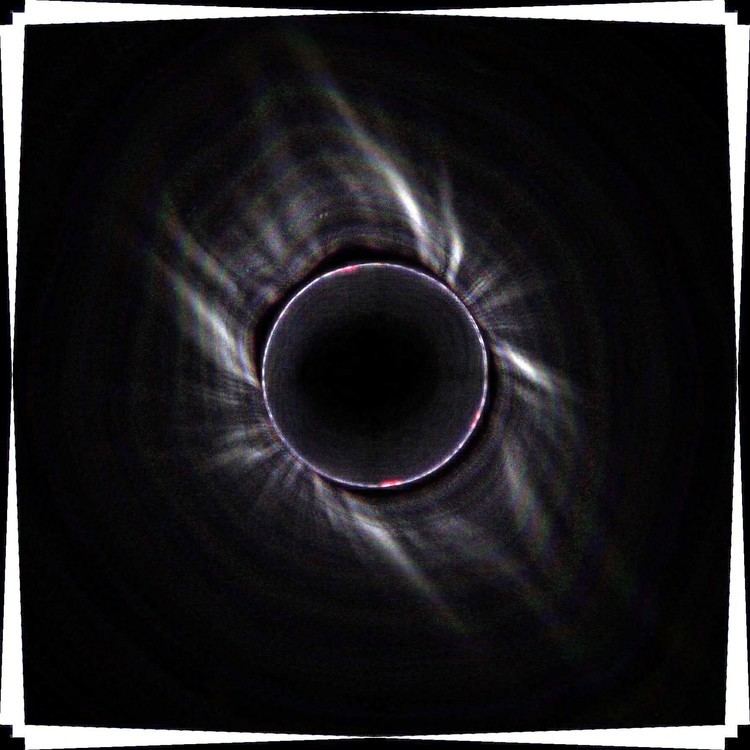
Because of the high population densities in areas of the path, this was one of the most-viewed total solar eclipses in human history; although some areas in the path of totality (mainly in Western Europe) offered impaired visibility due to adverse weather conditions.
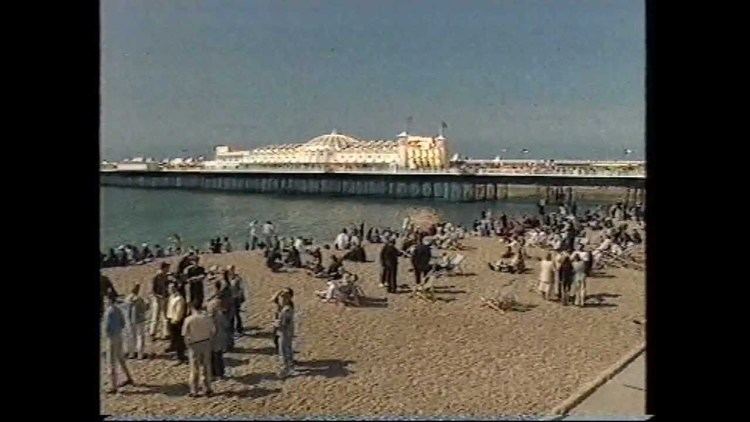
Some of the organized eclipse-watching parties along the path of totality set up video projectors on which people could watch the shadow as it raced towards them. There was substantial coverage on International TV stations of the progress of the eclipse shadow. The Moon's shadow was also observed from the Russian Mir space station; during the eclipse, video from Mir was broadcast live on television.
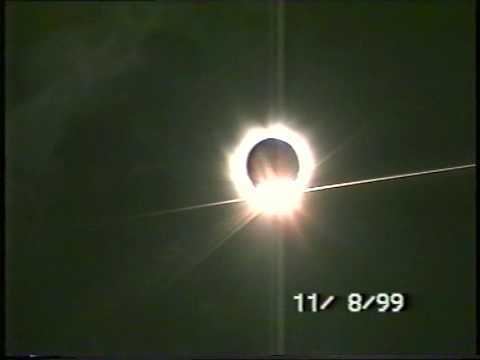
Solar eclipses 1997–2000
Each member in a semester series of solar eclipses repeats approximately every 177 days and 4 hours (a semester) at alternating nodes of the Moon's orbit.
Saros 145
This solar eclipse is a part of Saros cycle 145, repeating every 18 years, 11 days, containing 77 events. The series started with partial solar eclipse on January 4, 1639, and reached a first annular eclipse on June 6, 1891. It was a hybrid event on June 17, 1909, and total eclipses from June 29, 1927 through September 9, 2648. The series ends at member 77 as a partial eclipse on April 17, 3009. The longest eclipse will occur on June 25, 2522, with a maximum duration of totality of 7 minutes, 12 seconds.
Metonic series
The metonic series repeats eclipses every 19 years (6939.69 days), lasting about 5 cycles. Eclipses occur in nearly the same calendar date. In addition the octon subseries repeats 1/5 of that or every 3.8 years (1387.94 days).
